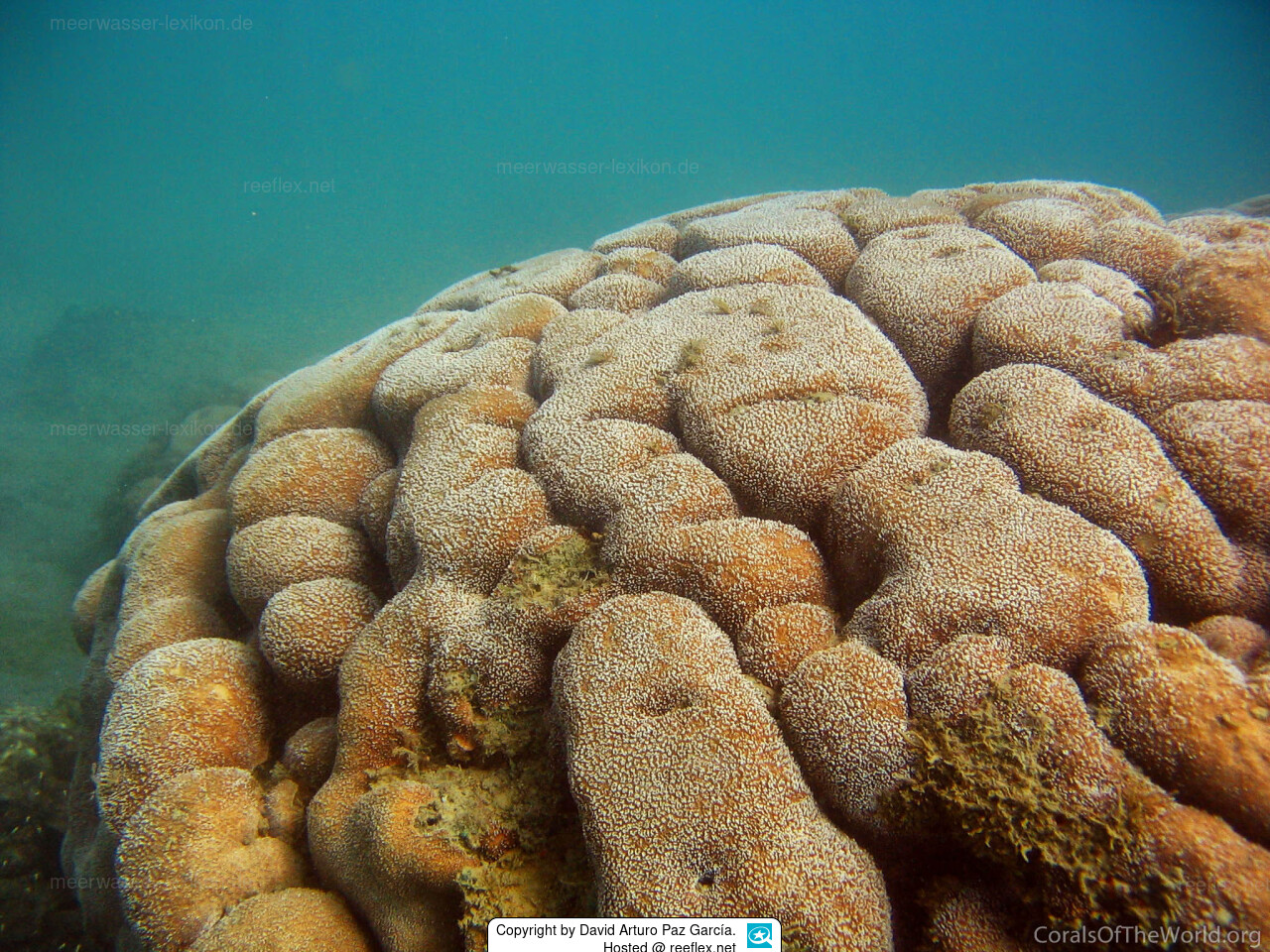Info
Very Special thanks for the first three photos of Pavona gigantea to Ryan McMinds, PHD-Student, Oregon State University.
Ryan McMinds supports the Global Coral Microbiome Proyect in Panama and has taken his photos of Pavona gigantea around the Isla de las Perlas, in Panama.
Pavona gigantea occurs in different colour from green, gray, or brown and is encrusting, plate-like or columnar with more widely spaced corallites.
From Corals of the World by Charlie Veron:
Characters: Colonies are massive. Corallites have thick walls and are well defined. Septo-costae are in two indistinct orders. Columellae are well developed. Tentacles are extended during the day giving colonies a furry appearance.
Colour: Green, grey and brown.
Similar Species: Pavona explanulata, which has similar corallite structures, but does not form massive colonies. See also Pavona decussata.
Habitat: Occurs on shallow protected rocky substrates.
Abundance: Uncommon.
Classification: Biota > Animalia (Kingdom) > Cnidaria (Phylum) > Anthozoa (Class) > Hexacorallia (Subclass) > Scleractinia (Order) > Agariciidae (Family) > Pavona (Genus) > Pavona gigantea (Species)







 Dr. David Arturo Paz García
Dr. David Arturo Paz García




















